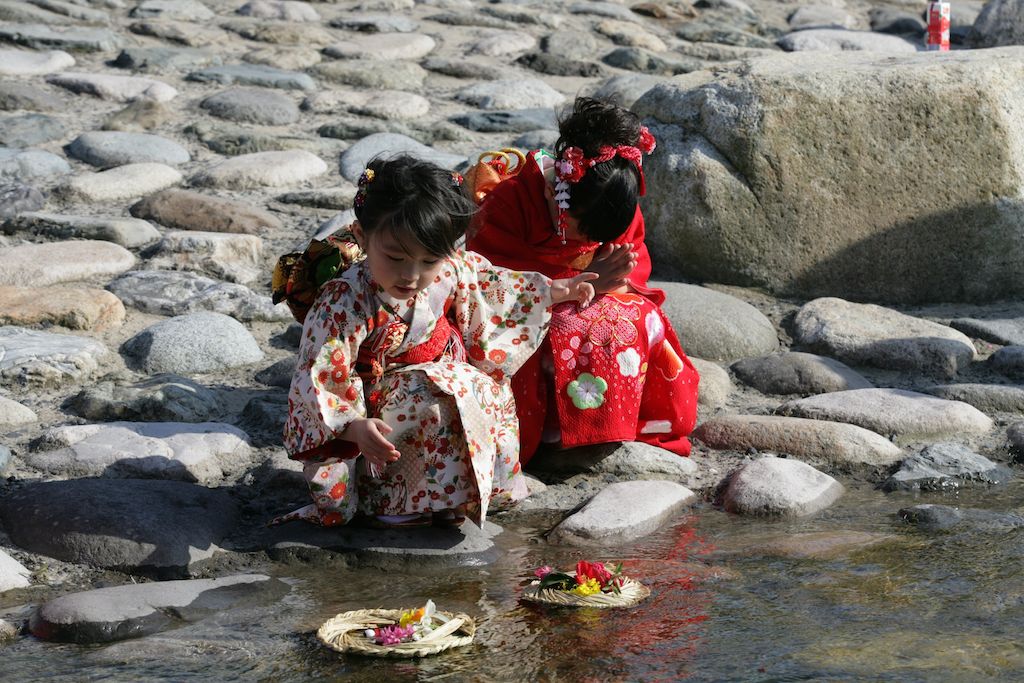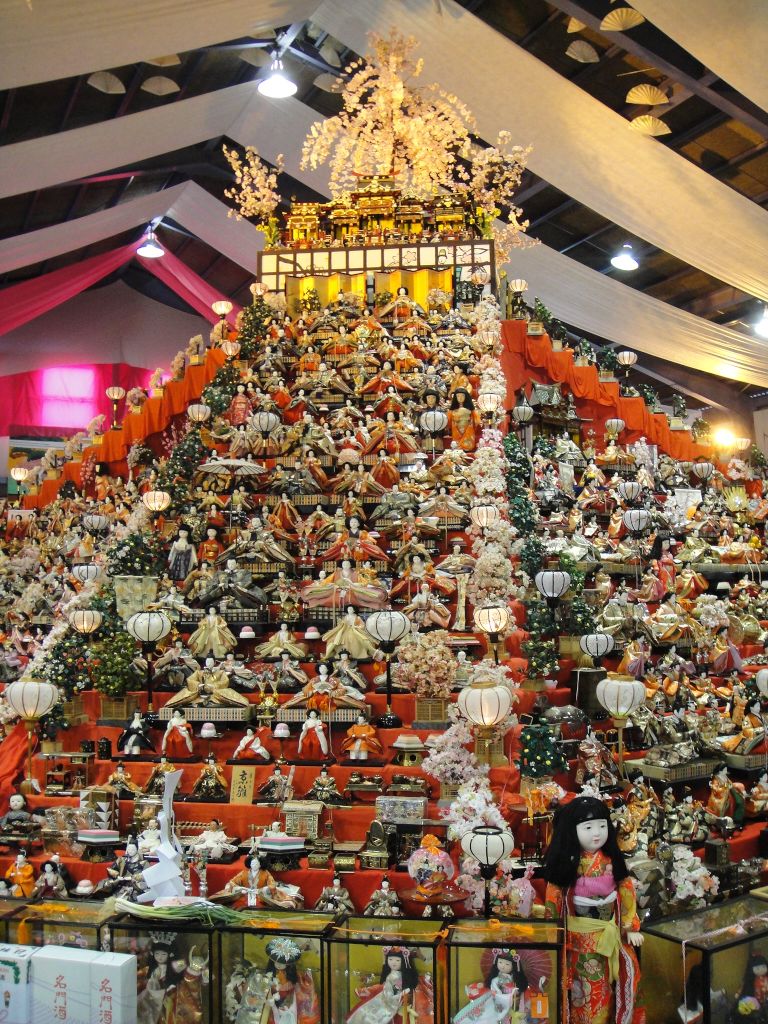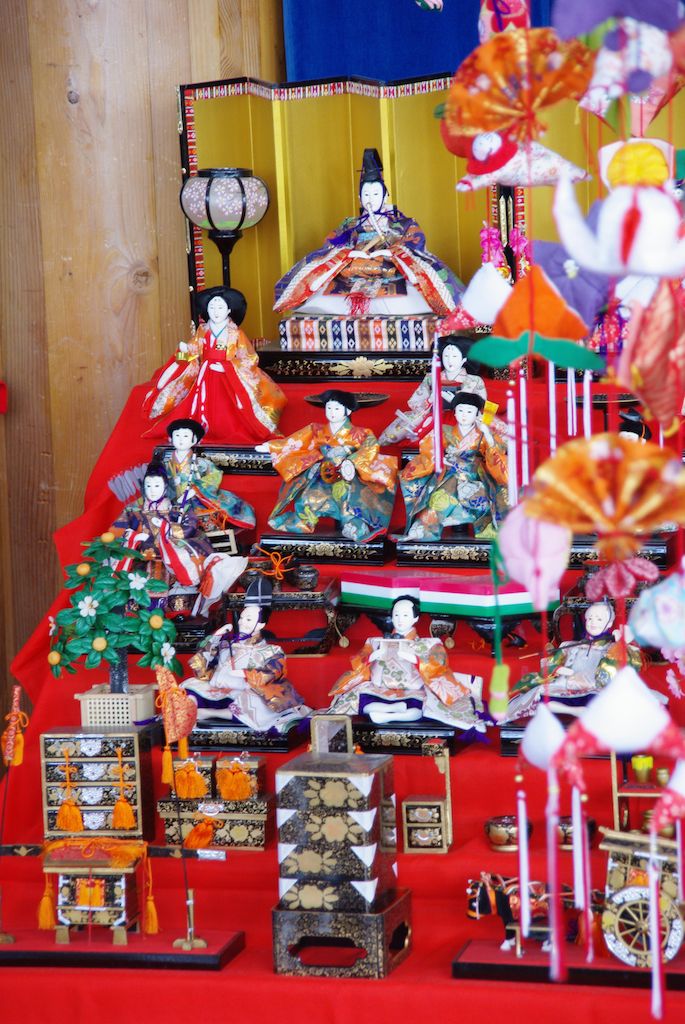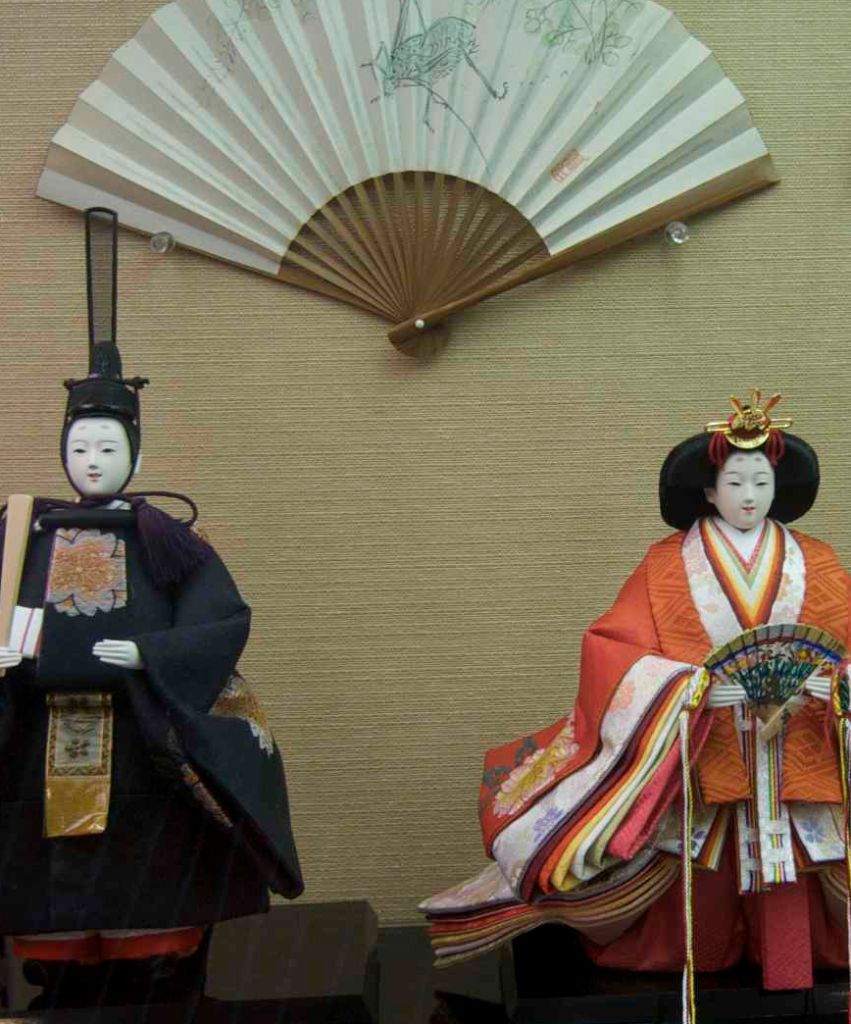Hina Matsuri Doll Festival Lifts Up Japanese Girls
This traditional festival honors the girls of Japan on Day Three of the Third Month.
by Bob Kerstetter
Celebrating, Honoring, Praying for Girls
On the third day of the third month—March 3 by the Western calendar—Japanese families celebrate, honor and pray for the moral strength and good health of their daughters. This is Hina Matsuri—ひなまつり in hiragana—the Doll Festival, also known as the Girls' Festival.
Hina Matsuri is festival two of the traditional five annual festivals—Gosekku—from the feudal era of Japanese history. Because of this, some Japanese traditionally give this special attention to girls on the third month and third day of the Lunar calendar. Gosekku also includes Tango no Sekku, the traditional Boys' Day.

Girls release a pair of straw dolls—male and female—to carry disease and danger to the sea. This photo is copyrighted by JNTO. Used by Permission. All rights reserved.
Dolls Begin Showing Up Everywhere
You can tell when the Girl's Festival grows near, as beautiful white-faced dolls—called hina ningyou (abbreviated as hina)—begin to appear in homes, community buildings, local shops and department stores. They wear the cheerful clothing of the Heian era of Japanese history. The dolls remind girls—and their brothers, parents, extended family members, friends and neighbors—of the history of Heian Japan.
Hundreds of small manufactures in Japan hand make hina for the festival. Bodies and heads of the dolls come from wood, clay and ceramic. Fine and colorful fabrics go into making their clothes.
Clothed in their Heian attire, the dolls represent the Emperor and Empress, plus court officials, royal attendants, warriors and common people. Not all collections contain all of these, but most include the Emperor and Empress. The hina normally sit—but some may stand—on tiered platforms covered with red fabric.
Modeling the Heian Royal Court
The dolls representing the royal couple occupy the top row, sometimes flanked by their highest-level advisors. On lower levels, other hina mingle among detailed miniature models of things from everyday Heian-era life. These items include lacquered storage chests and palanquins, plus tools, bows and swords. The lowest level of a display sometimes contains miniature trees of peach, cherry and orange—the trees you might find in the imperial garden of Heian-kyo. The peach tree receives special emphasis because it often blossoms in early March. Because of this, the festival also carries the name Peach Festival or Momo no Sekku. Families also make rice cakes and cook clams to decorate the display. The overall display appears as a community of dolls for Japanese girls.

A large public display of hina celebrate the Doll Festival on the third day of third month. This photo is copyrighted by Tourism Shikoku and JNTO. Used by Permission. All rights reserved.
Growing and Retiring Sets of Dolls
During the festival, Japanese girls observe the hina displays, but refrain from playing with them as they might play with other dolls. The girls learn from the dolls about Heian history and disciplined living. They experience the details of fine quality artistry. The special care the dolls receive allows some to last for multiple generations. Japanese girls enjoy festival dolls of their own, plus those their mothers brought to their new families when they married. Through multiple-generations of inheritance, some family collections of festival dolls grow very large.
While the dolls remain safely stored throughout most of the year, they eventually wear out from multiple years of festival display. When this occurs, families may retire the dolls at Shinto Shrines or Buddhist Temples.
In a common Buddhist ceremony, participants say a prayer before a temple priest adds the doll to a ceremonial fire. Shinto rituals purify worn out dolls in a celebration before sending them to rest in the sea.

A Girls' Day display shows hina and lacquered household items. This photo is copyrighted by Yasufumi Nishi and JNTO. Used by Permission. All rights reserved.
Sending Danger and Disease to Sea
A once common practice during Hina Matsuri sends a pair of straw dolls—male and female—down a river to the sea in a straw vessel. Tradition says the man and woman act as protectors, taking on and absorbing disease and danger to carry them away from children—both boys and girls. Known as hina nagashi, this practice once almost ceased to exist in Japan, but currently attracts a small following.
The Girls' Festival originated during the Heian era of Japan, when the capital city was to Heian-kyo, the location of modern-day Kyoto in the Kansai region. The Heian era ran from 794 to 1185 in the common era.

Hina representing the emperor and empress. Copyright 2013 Village Hiker Publishing Company, All Rights Reserved.
Japanese Word — Pronunciation — English Translation
雛祭, 雛祭り, ひな祭り, ひなまつり — Hina Matsuri (hinamasturi) — Doll Festival, Girls' Festival
雛人形, ひなにんぎょう — Hina Ningyou (hinaningyou) — Doll Festival Dolls
桃の節句, もものせっく — Momo no Sekku (momonosekku) — Peach Festival
ひな流し, ひなながし — Hina Nagashi (hinanagashi) — Floating dolls downstream (roughly)